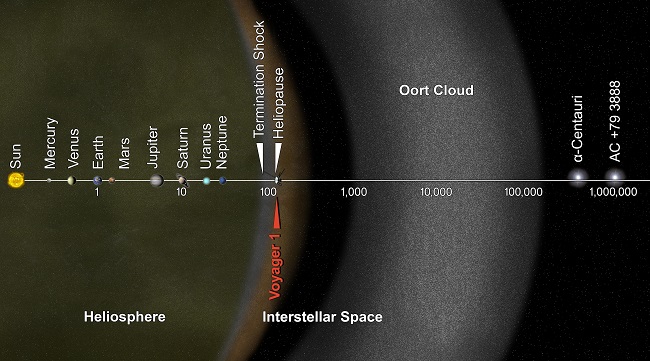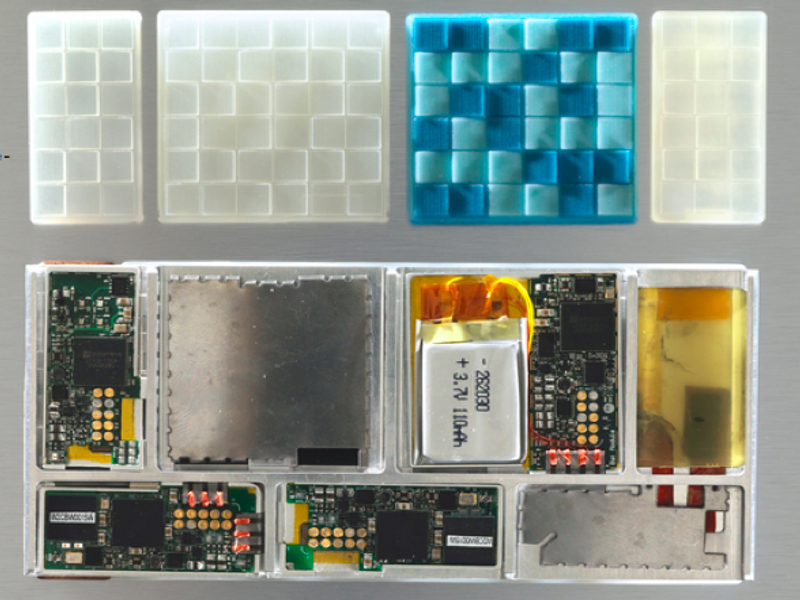Scientists rolling molecules. Image via Bob May/Flickr
Every year, scientific advancements appear to be getting bigger, bolder and more exciting, and this year was no different. Here are 10 stories that fascinated the public in 2014.
Philae lands on a comet!
By far, the science story that has captured the world’s attention this year was the first successful landing of a spacecraft on a comet, in the form of little Philae from its mother craft, Rosetta in November.
The €1bn European Space Agency (ESA) Rosetta mission began when the spacecraft was launched from a spaceport in Kourou, French Guiana, in March 2004.
Travelling to the 4.5-kilometre wide comet 67P/Churyumov-Gerasimenko, Rosetta required gravity assists, which were provided by planetary flybys of Earth and Mars.
At 9.03am (UTC) on 12 November, the ESA team received the signal telling them the Philae lander had successfully detached from Rosetta, 22.5km from comet 67P. A tense seven-hour wait followed and at 4.03pm (UTC), Philae’s touchdown was confirmed, albeit with a few difficulties.
An amazing achievement for mankind and one that could open the possibilities of future comet landing missions that could tap the space debris’ resources.
The ROLIS instrument aboard the Philae lander captures comet 67P just 3km from the surface. Image via ESA/Rosetta/Philae/ROLIS/DLR
NASA confirms Voyager 1 spacecraft has entered interstellar space
Four months on from Voyager 1 becoming the first spacecraft from Earth to enter interstellar space, the probe still continues to drift out into the black abyss, and will so indefinitely.
The craft was confirmed to have entered the outside realms of our solar system following the recording of Voyager 1 ‘singing’ after a cosmic wave hit it after a burst of solar energy a year earlier.
Launched in 1977, Voyager 1 carries a gold plate designed for possible intelligent life to discover what life is like on Earth and what human beings are like. The craft, however, is not due to come anywhere even close to a star for another 40,000 years, with that star being Gliesse 445. Let’s not hold our breath.

A scale showing our solar system and its outer reaches
Scientists develop blackest material ever created
In July this year, scientists from Surrey NanoSystems released details of their new material, Vantablack, reportedly the darkest material created to date, with only 0.035pc of light escaping from its surface.
Surrey NanoSystems claims the material created from low-temperature carbon nanotubes can be useful for the construction of large, sensitive telescopes, infrared scanning systems and even space stations.
Speaking since, the company’s CTO Ben Jensen in an interview with The New York Times discussed how the material would appear if someone walked into a room dressed head to toe in the material.
“If there was a light, it would be eerie, like seeing a bulb hanging in free space. You could see another person, but you couldn’t perceive the size, shape or depth of the space about you. You couldn’t see the floor. It would be totally disorienting. I’m sure you wouldn’t want to stay there,” Jensen said.

The Vantablack material. Image via Surrey NanoSystems
Russia strikes fear in US with claims of ‘satellite killer’ placed in orbit
The concept of satellites being blasted out of orbit by Russian military satellites piqued the interest of many, both in the fields of science and geo-politics, after a mysterious unclaimed satellite that many people claimed was a ‘satellite killer’ was found to have been launched into orbit.
Discovered in November but launched in May by Russia, the satellite was initially thought to have been a piece of space junk, but upon further inspection it was found to have changed course numerous times, seemingly aimed at other satellites.
Officially dubbed ‘object 2014-28E’, the fact the satellite launch was undeclared caused much fear among US analysts, in particular, who feared a return to the ‘Istrebitel Sputnikov’ – or satellite killer – project examined by the Soviet Union as early as 1963.

An illustration of the Star Wars programme proposed by former US president Ronald Regan. Image via Wikimedia Commons
Brian Cox’s Galileo experiment is mind-blowing
Does anyone have a bad word to say about Brian Cox, space enthusiast, physicist and musician extraordinaire?
Aside from a misquote which claimed he dismissed the notion that there could be intelligent life in the universe, he has found himself as one of the friendly faces that connect the average Joe with the wonders of science and space, similar to Neil deGrasse Tyson and Irishman Dara Ó Briain.
Just last month, his basic gravity experiment, albeit it on a grand scale, seemingly attracted the attention of millions of people – if a bowling ball and a feather are dropped in a vacuum, do they fall at the same rate?
To find out, Cox went to Cleveland, Ohio, to visit US space agency NASA’s Space Power Facility, which contains the world’s biggest vacuum chamber.
The curious case of Dr Joseph Roche: an Irishman’s mission to Mars
In July of this year, Siliconrepublic.com spoke to an Irish astrophysicist who could one day lay claim to being one of the first people to set foot on Mars as part of the ambitious Mars One mission, which aims to have mankind on the Red Planet by 2024.
The project has garnered much attention, not just for attempting what would be the greatest achievement mankind has ever seen, but also because the harsh reality exists that the four astronauts eventually chosen for the project will never be able to return to Earth.
As Ireland’s only remaining candidate, Dr Joseph Roche, who is a lecturer at Trinity College Dublin, said he understands the realisation of never returning to Earth, but would have no hesitation in joining the mission.
“I know it sounds like a lot to give up but what you’ll be gaining as one of the first inter-planetary scientists is immense. Even if they called me right now and said there’s a taxi waiting outside, you need to go, I’d go in a heartbeat,” Roche said.
Dr Joseph Roche, astrophysicist and lecturer at Trinity College Dublin and shortlisted Mars One mission hopeful
Nanoparticles that deform to liquid defies scientific theories
A crystalline structure acting like a liquid was one particular fascinating discovery in October.
A team of international researchers, led by Prof Ju Li, published their findings in the journal Nature Materials. The researchers used particles of pure silver that measured only a diameter of 10 nanometres at room temperature. The researchers were astonished to find the particles were somehow acting like a liquid, which went against current scientific understanding.
The silver’s appearance as a liquid was not consistent throughout, however. Tests found only the outer layer, about one or two atoms in density, was actually liquid, while the rest remained solid.
As for what applications this discovery has, one of the most likely ones could involve the creation of electrical circuits used in machines that would have to withstand strong centrifugal forces.

Nanoparticles image via Shutterstock
Stanford engineers create gaming controller that detects players’ emotions
The emotional link between gamers and their consoles may be more intrinsically linked following the news in April that Stanford University researchers hacked an Xbox 360 controller to be able to read a player’s physiology through pads placed on the controller.
By being able to read a player’s emotive state as he or she plays through tell-tale signs such as sweat or pulse rate, the researchers are hoping to design a game that will change in level of difficulty in-game, for example, to maintain the interest of a player who has been finding the game too easy to play.
Likewise, if a player is playing a horror game, the tension could be ratcheted up if the pads sense increased levels of sweat, just to horrify the player even more.
No doubt if this proves to be a commercially viable concept, consumers can expect to see it appear in future gaming consoles.
Project Ara: Google wants to turn mobile devices into pieces of clever Lego
Is there any cooler idea than a mobile phone that can be built and disassembled like a Lego set?
Well, this year internet search giant Google and its project designated Ara, created with the help of the remaining elements of Motorola that Google didn’t sell on to Lenovo, is attempting just that.
When released, consumers will no longer need to be tied to a particular brand of phone, but can rather chop and change the phone’s components, from RAM to graphics card, all at a cost the individual consumer would be able to afford.
Speaking of Project Ara in February, Google said it was time the industry underwent a major change. “The smartphone is one of the most empowering and intimate objects in our lives. Yet most of us have little say in how the device is made, what it does, and how it looks.
“And 5bn of us don’t have one. What if you could make thoughtful choices about exactly what your phone does, and use it as a creative canvas to tell your own story?”

An early build of a Project Ara phone
NASA opens the moon to private mining companies
Just like the premise to Duncan Jones’ feature film Moon, US space agency NASA in February opened Earth’s largest and only natural satellite, the moon, to exploitation by private companies looking to mine for precious materials.
In Moon, the sought-after resource was Helium-3, an element considered a potential future fuel source for nuclear fusion reactors that would provide enormous quantities of clean energy, and seemingly this is the case in real life also.
Speaking at the time of the decision to open up the moon to corporate bidders, Greg Williams, NASA’s deputy associate administrator for the Human Exploration and Operations Mission Directorate said, “As NASA pursues an ambitious plan for humans to explore an asteroid and Mars, US industry will create opportunities for NASA to advance new technologies on the moon.”

A scene from the film Moon with a Helium-3 mining vehicle in the foreground. Image via Sony Pictures
.png)
.JPG)